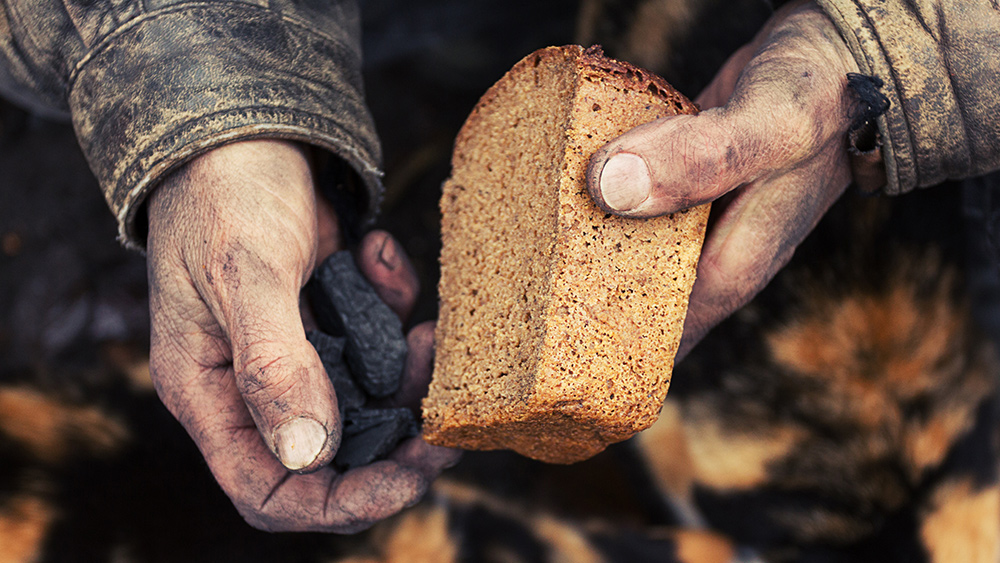Advertisement
(Bugout.news) One of our top priorities in an emergency situation will be to secure enough potable (drinkable) water, because without it, we know that humans don’t live very long. The fact is, whether you’re lost in the desert or trying to survive a natural disaster or societal breakdown, the human body can only last about 72 hours without water.
While water is generally plentiful, much of it is available in untreated form, so disinfecting water becomes necessary in order to consume it. The good news is, there are multiple ways to accomplish that. The issue is figuring out which technique is best in each situation.
Before you can disinfect your water, you first have to find it. Depending on where you are, it can be rather scarce or abundant, via surface water sources like rivers and lakes, streams and ponds. In addition, precipitation in the form of rain or snow can also act as a water source. Fresh rain that has not fallen through jungle or forest canopy should be clean enough to drink as-is; ditto for new snow that can be melted.
Also, water that is rising up from an underground spring should also be potable without any additional treatments (try small samples first). In addition, water that oozes from tapped trees like maple and others should also be good to go. Most other sources should be considered “dirty,” however, and needing to be filtered using one of the following methods:
Boiling: This is one of the surest ways to disinfect your water. Boiling is the most effective, reliable way to kill parasites, bacteria and other pathogens; five minutes of roiling water over a camp stove or other heat source should do the trick if you’re short on time, but 10 minutes is best. Boiling won’t evaporate all forms of chemical pollution, but it’s still one of the safest disinfecting methods.

Distillation: Lead, salt, heavy metals, radiation and other contaminants can taint your water supply after a disaster; trying to filter those out using conventional methods will simply ruin your expensive (and likely only) filter.
In a situation where the only water available is dangerous water, there are not a lot of options, but the safest solution is water distillation. Water can be heated into a steam and the steam captured to create relatively clean H20, including radioactive water. Now, distillation won’t get rid of all forms of contaminants like volatile oils and some organic compounds, but most heavy particles will remain behind.
Here is a short video describing the distillation process:
Survival straws: A small, lightweight solution, these straw-like devices are excellent for disinfecting several water sources. The newest models can be used as you would a drinking straw; they can also connect to a drain on a water heater, to clean up water stored there after a disaster.
Also, these devices can fit on standard garden hoses to filter water running through them. But don’t expect these to filter out every virus or bacteria, especially from a hose that has been laying in the sun or a water heater full of long-standing tepid water after a prolonged outage. Most of these filters do contain some activated carbon filter element that will filter out larger bacteria and remove odd flavors and orders as well.
Filters: There are two main types of water filters in use today – pump-action filters and drip/suction filters.
The first type utilizes a pump to force raw water through a filter cartridge, while the latter are filter cartridges that use gravity drip (think IV bag) or are placed in line on hydration bladder hoses.
When used on a hydration bladder, the user sucks water through the filter as needed. A favorite for many is a type like the Katadyn Pocket filter. It has a ceramic cartridge with silver imbedded inside.
UV Light: Ultraviolet light is quite damaging to smaller organisms, so when utilized as a method of disinfection, it is very effective.
Devices like the Steripen Sidewinder don’t require a battery because they are hand-cranked water purification devices that disrupt the DNA of illness-causing microbes in mere seconds.
There are also a few battery-powered Steripen products that pack the same punch on bad bugs, and have been field-proven around the globe.
SODIS: Very effective. What you do is fill a plastic bottle with contaminated water and leave exposed to the sun for a minimum of one full day. The sun’s abundant UV light works like the method above. It’s economical and easy.
However, there are drawbacks. First, you need full sun for at least a day or you’ll need two days in overcast conditions. Also, this method may not be as effective against bacterial spores and cyst stages of some parasites. Also, the bottles – and the water – must be clear.
Disinfecting tablets: These are also a great way to clean your water, but one thing you should consider is shelf life, especially if you’re stocking a bugout bag or a hideaway. Some brands only have a one-year shelf life; others are good for two years.
Also, some brands disinfect more quickly. Some do so within 30-35 minutes; others take several hours. And make sure to read the warning labels; iodine tabs, for instance, should not be used for pregnant women, people with thyroid issues or those who have shellfish allergies.
Bugout.news is part of the USA Features Media network.
Submit a correction >>
This article may contain statements that reflect the opinion of the author
Advertisement
Advertisements















